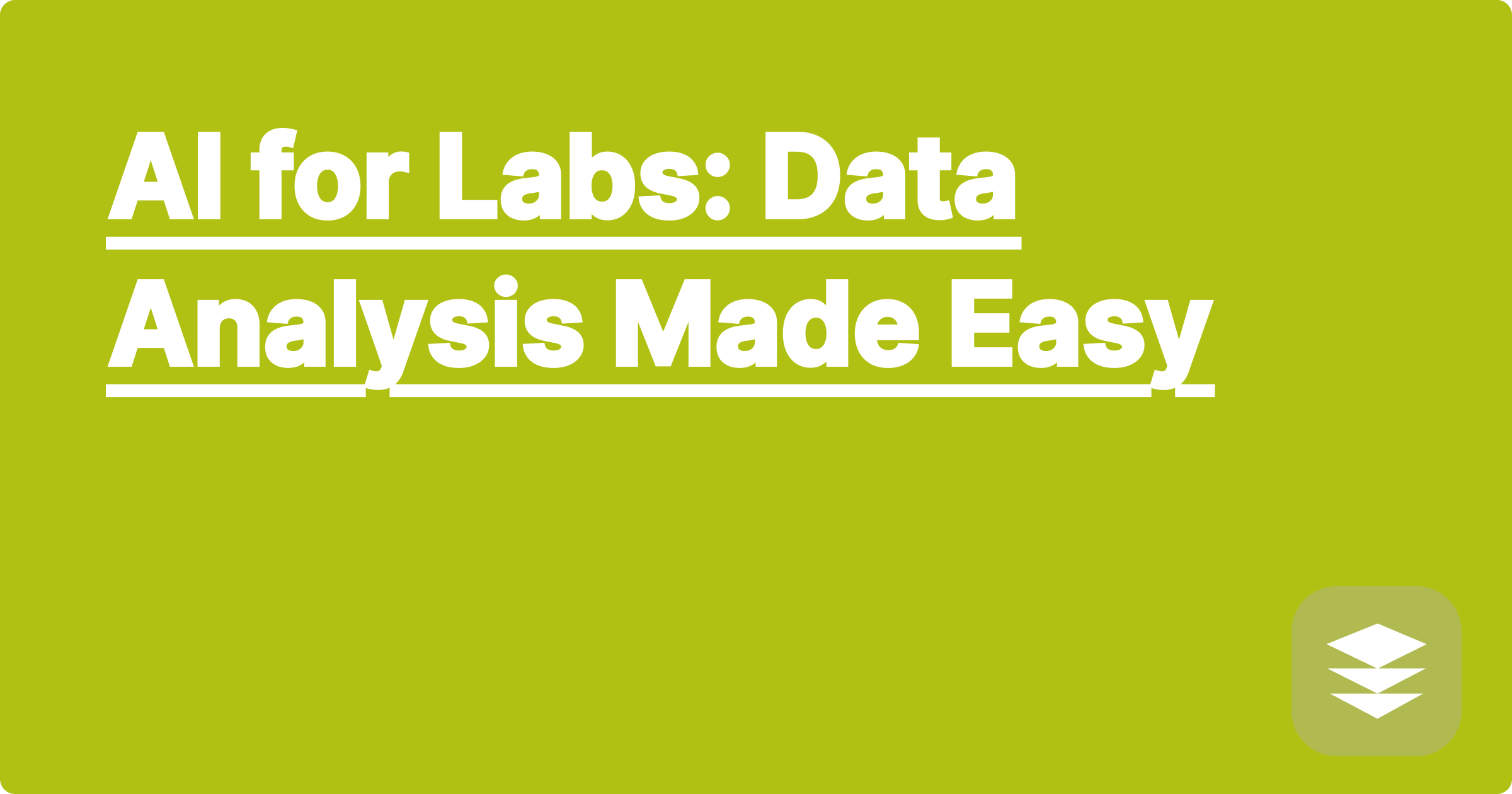
STEM fields are awash in data, a deluge that presents both immense opportunity and significant challenges. Analyzing this data efficiently and accurately is crucial for progress, yet traditional methods can be time-consuming, complex, and prone to error. Artificial intelligence (AI) offers a transformative solution, providing powerful tools to streamline data analysis, uncover hidden patterns, and accelerate scientific discovery. This shift towards AI-driven analysis is revolutionizing how STEM students and researchers approach their work.
For STEM students and researchers, mastering AI-powered data analysis is no longer optional; it's a necessity. These skills are becoming essential for success in academia and industry. By embracing AI tools, students can gain a competitive edge, completing projects more efficiently and extracting deeper insights from their data. Researchers can accelerate their work, pushing the boundaries of knowledge and making groundbreaking discoveries. This blog post will delve into the specific challenges of STEM data analysis and explore how AI can provide effective solutions, empowering you to harness the full potential of your data.
STEM data often presents unique challenges. Datasets can be massive, complex, and multi-dimensional, encompassing everything from genomic sequences to astronomical observations. Traditional statistical methods can struggle to handle such complexity, requiring extensive programming knowledge and computational resources. Furthermore, data preprocessing, cleaning, and feature engineering can be tedious and error-prone, consuming valuable time and effort. The sheer volume of data can also make it difficult to identify meaningful patterns and draw accurate conclusions. Another challenge is the specialized nature of STEM data, which often requires domain-specific knowledge and expertise for proper interpretation. These complexities necessitate new approaches to data analysis, approaches that can leverage the power of AI.
AI tools like ChatGPT, Claude, and Wolfram Alpha offer powerful capabilities for tackling these challenges. ChatGPT and Claude excel at natural language processing, enabling users to interact with them conversationally to explore data, generate code, and interpret results. Wolfram Alpha, with its vast knowledge base and computational engine, can perform complex calculations, generate visualizations, and provide insights into a wide range of scientific domains. These tools can automate many of the tedious aspects of data analysis, from data cleaning and preprocessing to statistical modeling and hypothesis testing. They can also help identify hidden patterns and relationships within data that might be missed by traditional methods.
Begin by clearly defining your research question and identifying the relevant data. This crucial first step sets the foundation for your analysis. Next, choose the appropriate AI tool based on your specific needs. For example, if you need to analyze text-based data, ChatGPT or Claude might be suitable. If you require complex calculations or symbolic manipulations, Wolfram Alpha could be the better choice. Once you've selected your tool, prepare your data by cleaning it, removing any errors or inconsistencies, and formatting it appropriately for the chosen AI tool. Then, interact with the AI tool, providing it with your research question and data. You can ask it to perform specific calculations, generate visualizations, or explore different statistical models. Finally, carefully evaluate the results generated by the AI tool, ensuring they align with your research question and are scientifically sound. This iterative process might involve refining your queries, adjusting parameters, and exploring different analytical approaches.
Consider a researcher studying the expression levels of specific genes in a large dataset. They could use Wolfram Alpha to perform statistical tests, such as t-tests or ANOVA, to compare gene expression between different experimental groups. For example, entering "t-test {1.2, 1.5, 1.8, 2.1}, {2.5, 2.8, 3.1, 3.4}" into Wolfram Alpha will directly compute the t-statistic and p-value. Another example involves a chemist trying to predict the properties of a new molecule. They could use ChatGPT or Claude to generate code for molecular simulations or to access relevant literature on similar compounds. A prompt like "Write Python code to calculate the molecular weight of C6H12O6" would generate the required code. These are just a few examples of how AI can be applied to diverse STEM fields.
To effectively integrate AI into your academic workflow, develop a strong understanding of the underlying principles of data analysis and statistical methods. This foundational knowledge is essential for interpreting AI-generated results and ensuring their validity. Experiment with different AI tools to discover which ones best suit your research needs and learning style. Don't be afraid to explore the various functionalities and capabilities of each tool. Critically evaluate the output of AI tools, always questioning the results and validating them against existing knowledge and established scientific principles. Remember that AI is a tool, and its effectiveness depends on how well it is used. Collaborate with peers and mentors to share best practices and learn from each other's experiences. This collaborative approach can accelerate your learning and help you stay at the forefront of AI-driven research.
In conclusion, AI is transforming the landscape of STEM research and education. By embracing these powerful tools, students and researchers can unlock new possibilities, accelerate their work, and gain deeper insights from their data. Start exploring the potential of AI today and discover how it can empower you to achieve your academic and research goals. Take the time to learn the basics of AI tools relevant to your field, experiment with different approaches, and integrate these powerful technologies into your workflow. The future of STEM is data-driven, and AI is the key to unlocking its full potential.
Ace STEM Exams: AI Study Planner
AI Homework Help: STEM Solutions
AI for Labs: Data Analysis Made Easy
STEM Exam Prep: AI-Powered Tutor
AI in Engineering: Design Optimization
Solve STEM Problems: AI Assistant
AI for Research: Data Visualization